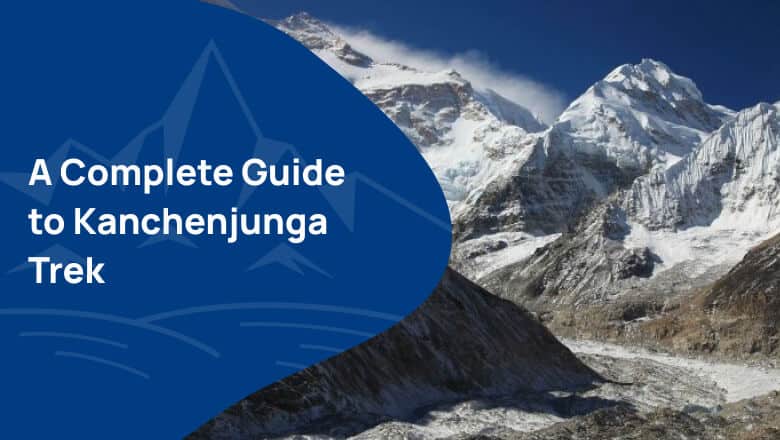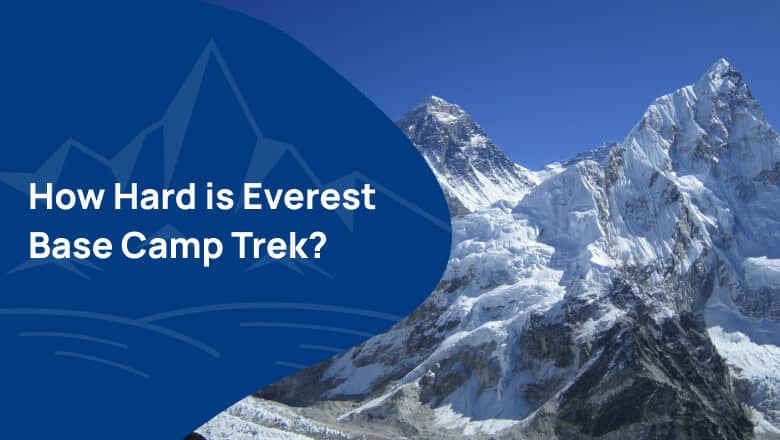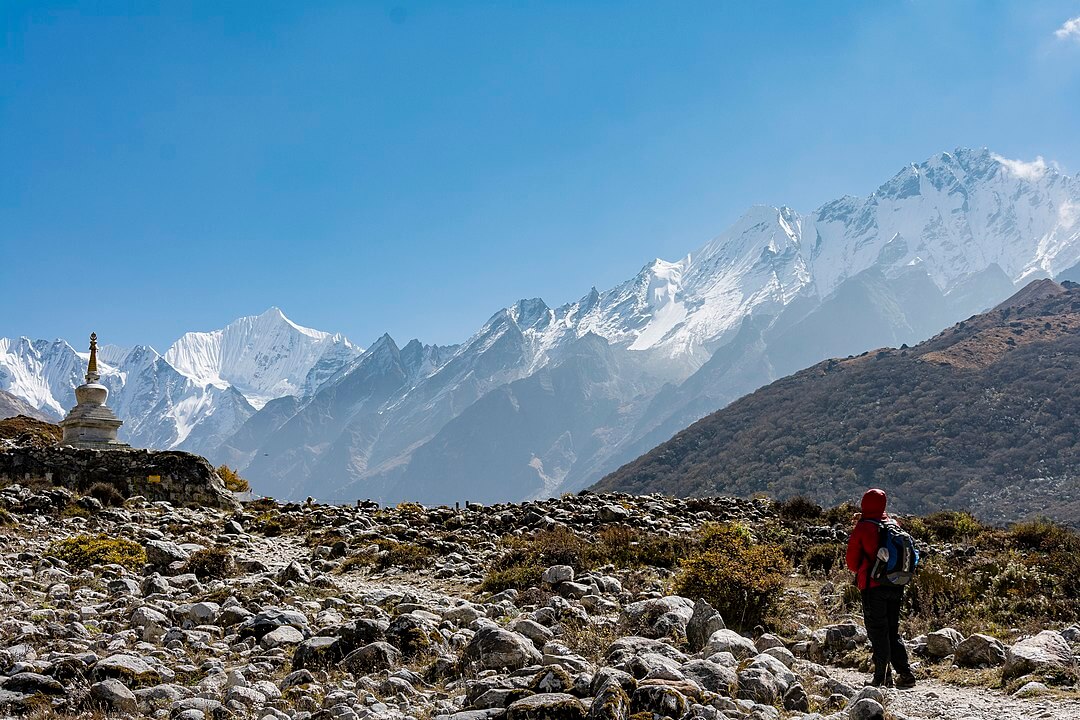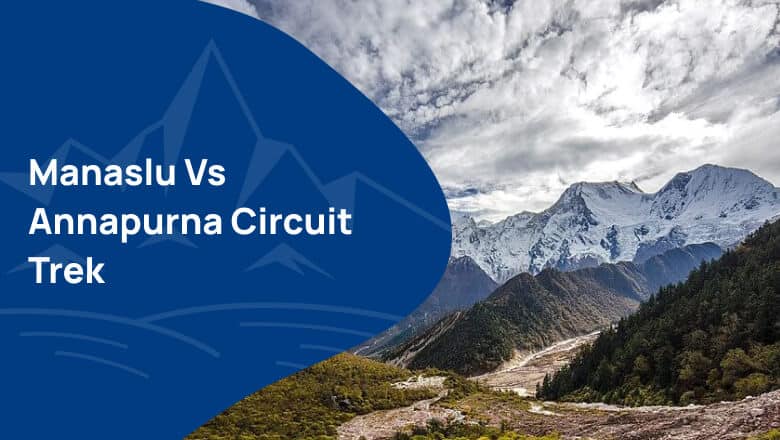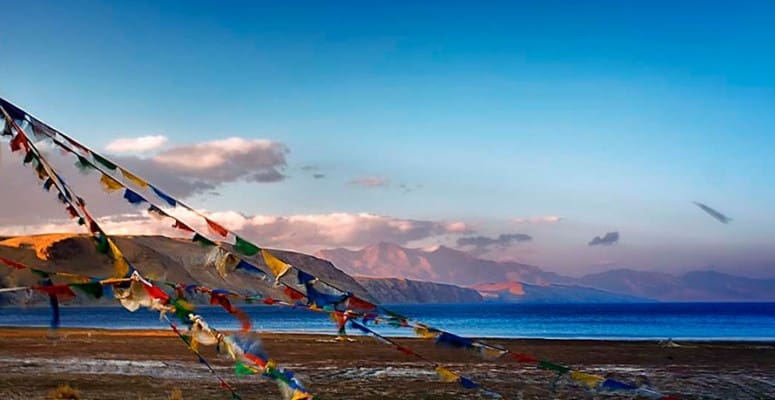As an experienced Nepalese trekker, I’ve had the chance to witness a lot of the Himalayan extensively in my life. However, one destination that stands out for me is the Kanchenjunga region.
Didn’t expect Kanchenjunga Trek, right?
What about Everest Base Camp Trek?
Well, Everest Base Camp Trek is one of the popular go-to destinations for trekkers in Nepal. But Kanchenjunga Trek has a lot to offer, especially for adventurous trekkers.
Therefore in this comprehensive Kanchenjunga Trek Guide, I’ll cover everything you need to know about the Kanchenjunga region, how to prepare for this epic trekking adventure, from the best time to go, the route options, the difficulty level, the permits, the gear and equipment, and much more.
Now let’s dive in and uncover the Kanchenjunga region’s undiscovered gems!
Contents
- Kanchenjunga Region
- Basic Facts of Kanchenjunga Trek
- Why is Kanchenjunga Trekking Worthwhile?
- Kanchenjunga Base Camp Trek
- Trekking Permits and Regulations
- When is the Best Time Trekking Kanchenjunga?
- How can I travel there? Transportation Options
- Types of Treks You Can Do in Kanchenjunga Region
- Kanchenjunga Base Camp Trek
- Kanchenjunga Trek Itinerary
- What kind of accommodation and Meals should I expect?
- What to Pack for Kanchenjunga Trek?
- How much does it cost to trek to Kanchenjunga Base Camp?
- How difficult is the Kanchenjunga Base Camp Trek?
- Tips and Safety Measures
- Final Say
- Ready to Book a Trip Now?
- Kanchenjunga Base Camp Trek
Kanchenjunga Region
In the eastern part of Nepal, close to the borders with India and Tibet, is where you’ll find the Kanchenjunga Area. The third-highest mountain in the world, Mt. Kanchenjunga, which has an elevation of 8,586 meters, inspired the region’s name.
The name “Kanchenjunga” translates to “Five Treasures of the Snows” after the five massifs of the mountain itself.
Kanchenjunga region was designated a conservation area in March 1998, covering 2,035 square kilometers. The region is well-known for its breathtakingly natural surroundings and distinct culture. Ethnic groups, such as the Limbu, Rai, Sherpa, and Tamang, reside in this area. Each group’s culture and customs may be seen in festivals, dances, and daily lives.
Apart from its cultural significance, it is home to rich flora and many endangered species, such as the snow leopard, red panda, musk dear and Himalayan black bear. In addition, experts have found 23 different kinds of rhododendrons growing in the area, making it a “hotspot” for plant diversity worldwide.
Trekking is one of the main activities in this region, although it is considered one of the most challenging treks in Nepal. However, it can be an ideal destination for those who want to challenge themselves physically and mentally while immersing themselves in the beauty of nature and culture.
Basic Facts of Kanchenjunga Trek
- Number of days: 20 to 22 days
- Distance hiked: Approx 210 km.
- Highest point: 5143 m
- Difficulty: Demanding
- Required permits: Two
- Average cost: USD 90 – 110 per day
- Transportation: Car, Jeep and Flight
- Accommodation: Teahouse
- Highlights: Kanchenjunga North and South Base Camp, Sele Le Pass
Do you have any question about trip to Nepal?
Tell us about your trip to Nepal and what you expect from it. We will answer your questions in 24 hours and help you design a trip with a comfortable itinerary to meet your needs best.
Why is Kanchenjunga Trekking Worthwhile?
Trekking in Kanchenjunga is a worthwhile experience for various reasons. First, this region lies in the eastern part of Nepal, taking you through remote and less-visited trails. Secondly, the cultural diversity in Kanchenjunga is another highlight of trekking in this region.
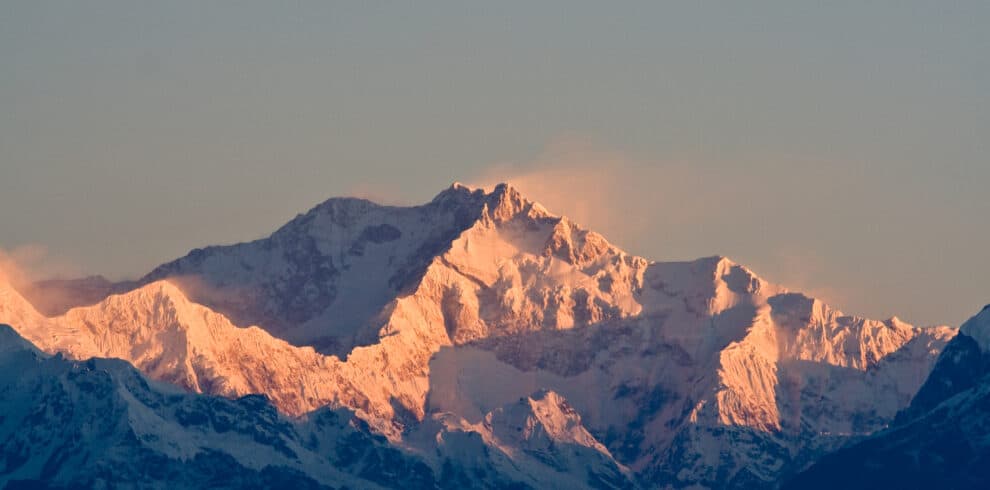
Mt. Kanchenjunga (8,586m), is the third highest mountain in the world after Mount Everest and K2,It is situated in the…
Below are some of the factors that make it stand out from other destinations and worthwhile:
- Offers breathtaking views of the world’s third-highest peak and other majestic Himalayan peaks such as Jannu, Kabru, and Rathong
- The trek to the Kanchenjunga Base Camp goes across many strong and faint rivers like the Arun River, Ghunsa Khola, and Simbuwa Khola.
- Takes you through dense forests of rhododendrons, oaks, and magnolias, where you can spot a variety of wildlife such as the snow leopard, red-billed blue magpie, shy dragon, Himalayan black bear, red panda, and musk deer
- Provides a unique opportunity to immerse yourself in the culture of the ethnic communities that inhabit the region, including Limbu, Rai, Sherpa, and Gurung
- Enables you to witness their unique customs, traditions, and way of life
- Allows you to taste their local cuisine, which includes delicious dishes such as momos, thukpa, and dal-bhat.
- Offers a perfect combination of natural beauty, cultural diversity, and physical challenge
- Suitable for experienced trekkers who are looking for a new adventure and want to explore the remote and less-visited trails of Nepal.
- Finally, the base camp and the Kanchenjunga Himalayas are shrouded in the mystery for the sightings of the Himalayan Yeti. Yeti is also a prominent subject of the local folklore and stories.
Trekking Permits and Regulations
To begin with, you must apply for permits from the Nepal government and follow all rules and regulations about trekking in the Kanchenjunga region. There are two different types of permits, notably the Restricted Area Permit (RAP) for the trail in the Tapethok and Yamphuding VDCs and the Kanchenjunga Conservation Area Permit (KCAP).
Kanchenjunga Conservation Area Permit (KCAP)
The Kanchenjunga Conservation Area Permit (KCAP) is a permit that allows visitors to enter the Kanchenjunga Conservation Area. The Kanchenjunga Conservation Area is spread over an area of 2,035 square kilometers and is managed by the Kanchenjunga Conservation Area Management Council (KCAMC). The region is home to diverse flora and fauna, including endangered species such as the snow leopard, red panda, and musk deer.
All trekkers who intend to enter the area must have the KCAP, which can be obtained at the Nepal Tourism Board office in Kathmandu or at the Kanchenjunga Conservation Area Project office in Taplejung.
Kanchenjunga Conservation Area Project Permit Cost
- Fee for Nepali citizens is NPR 100 per person.
- The fee for SAARC nationals is NPR 500 per person (US$ 5 approx.)
- The fee for other nationals is NPR 2000 per person (US$ 20 approx.)
Restricted Area Permit (RAP)
The Restricted Area Permit (RAP) is a special permit required for the trek as the area falls under the restricted region of Nepal. The four village development committees (VDCs) of Yamphuding, Lelep, Paping, and Olangchung Gola in the Taplejung District are among the prohibited areas. The permit can only be obtained through a licensed trekking agency in Nepal, and it’s mandatory to hire a registered guide and/or a porter for the entire duration of the trek.
Restricted Area Permit Cost
Kanchenjunga RAP cost depends on the days you stay on the restricted area trail.
- For the first four weeks: US$ 20 per person/ week
- Beyond the first four weeks: US$ 25 per person /week
Required Documents
To obtain the Kanchenjunga Trek permit, you will need to show the following documents during the application process:
- Valid passport with at least six months remaining validity and a valid Nepal visa extending past the expiry date of your RAP.
- E-copy of the passport-sized photo (to be uploaded for Kanchenjunga RAP’s online form)
- 2 Passport-sized photos (for KCAP)
- To apply for RAP Permit, the documents to be shown by the travel agencies:
- Application
- Verified Itinerary
- Insurance details for guide
- Online submission id (as provided by agency)
- Details of dollars
- tax clearance certificate
When is the Best Time Trekking Kanchenjunga?
When considering trekking to Kanchenjunga, the timing is crucial, and the most important aspect to consider is the weather and climate. As Nepal experiences five distinct seasons throughout the year, it’s essential to have extensive information on the weather, temperatures, and peak trekking season during each season before deciding on the best time to trek.
In the spring, the temperatures begin to warm up, and the entire region is covered with colourful flowers and rhododendrons in full bloom, creating a vibrant landscape. It’s an excellent time for trekking, with moderate temperatures and clear skies providing beautiful views of the Himalayan peaks.
Similarly, in the autumn season, the skies are crystal clear, and the visibility is excellent, providing trekkers with stunning views of the snow-capped mountains. The temperature is also mild, making it an ideal time to trek the Kanchenjunga region.
However, it’s important to note that during the monsoon season from June to August, the Kanchenjunga region experiences heavy rainfall, making trekking difficult and dangerous due to landslides and floods. It’s not recommended to trek in this season, and it’s best to avoid it altogether.
Moreover, during the winter months, from December to February, the temperature drops significantly, and the region experiences icy and snowy conditions. Trekking during this season can be quite challenging and potentially dangerous, so it’s only recommended if you are experienced and well-equipped for cold weather conditions.
Weather and Climate
The weather conditions in the Kanchenjunga region can be unpredictable, and it’s essential to be well-prepared for sudden weather changes regardless of the season. Here is a breakdown of the weather conditions you may encounter throughout the year:
| Month | Temperature (°C) | Precipitation (mm) | Weather Conditions |
| January | -5 to 7 | 30 to 50 | Cold and dry |
| February | -3 to 9 | 30 to 50 | Cold and dry |
| March | 2 to 13 | 50 to 100 | Mild and dry |
| April | 6 to 16 | 100 to 150 | Mild and dry |
| May | 9 to 18 | 150 to 200 | Warm and dry |
| June | 11 to 20 | 200 to 250 | Warm and wet (monsoon season) |
| July | 12 to 20 | 300 to 350 | Warm and wet (monsoon season) |
| August | 12 to 20 | 300 to 350 | Warm and wet (monsoon season) |
| September | 11 to 19 | 200 to 250 | Mild and wet (monsoon season) |
| October | 6 to 16 | 150 to 200 | Mild and dry |
| November | 1 to 11 | 50 to 100 | Cold and dry |
| December | -3 to 8 | 30 to 50 | Cold and dry |
Note that the temperatures and precipitation levels can vary based on the specific location and elevation within the Kanchenjunga region. Therefore, it’s important to check the weather forecast before embarking on the trek and to pack appropriate clothing and gear for the expected weather conditions.
Best Time to Trek Kanchenjunga
To have the best experience trekking Kanchenjunga, I recommend you plan your trek during the peak season of spring and autumn, which are March to May (spring) and September to November (autumn). The weather is generally stable during these seasons, with clear skies and comfortable temperatures.
But remember, spring and autumn are generally the peak seasons to trek in Nepal. During this time, the trails can become congested and the lodges overcrowded. Therefore, it’s essential to be aware of the potential crowds and to plan accordingly.
How can I travel there? Transportation Options
There are several transportation options available to get to Kanchenjunga, depending on your preference and budget. The most popular means of transportation are:
1. Flight
You can take a flight from Kathmandu to Biratnagar and then take a jeep or bus to Taplejung, which is the starting point of the Kanchenjunga trek. Flights typically offer a spectacular aerial view of the Himalayan region and are faster and more comfortable.
2. Road
You can take a local bus or hire a private jeep from Kathmandu or other nearby cities to Taplejung. This is a more affordable option, but the trip may be lengthy, exhausting, and rough.
3. Helicopter
You can hire a helicopter from Kathmandu to Taplejung for a more luxurious and quicker option. It’s a convenient way to reach your destination quickly and comfortably, but it’s also the most expensive option.
Once you reach Taplejung, you can begin your trekking adventure. It’s important to note that the last part of the journey to Taplejung is a rough and bumpy road, so it’s best to prepare yourself for the journey ahead.
Types of Treks You Can Do in Kanchenjunga Region
1. Kanchenjunga North Base Camp Trek
This trek takes you through Kanchenjunga’s less crowded and remote areas, offering a unique and authentic trekking experience. It usually takes around 20-25 days to complete and involves crossing several high mountain passes, including Sele La (4,290m) and Sinion La (4,660m). You’ll also witness stunning views of the Kanchenjunga mountain range, along with other Himalayan peaks such as Makalu, Everest, and Lhotse.
2. Kanchenjunga South Base Camp Trek
This trek is relatively easier and less challenging than the North Base Camp Trek, making it a popular choice among trekkers of all levels. It usually takes around 16-20 days to complete and involves passing through lush green forests, beautiful rhododendron fields, and several charming local villages. Along the way, you’ll get to witness breathtaking views of the Kanchenjunga range, as well as other peaks such as Jannu and Makalu.
3. Kanchenjunga Circuit Trek
The Kanchenjunga Circuit Trek is a long and challenging trek that takes you through some of the most remote and beautiful areas of the Kanchenjunga region. It is a combination of both the North and South Base Camp Treks, which allows you to explore a larger area and witness more of the stunning mountain scenery.
The trek starts from the village of Suketar and follows the same route as the North Base Camp Trek for the first few days, passing through lush forests and charming villages. From there, you’ll head east towards the remote and rugged Lhonak Valley, which offers breathtaking views of the Kanchenjunga massif.
After exploring the Lhonak Valley, you’ll cross the Lapsang La Pass (5,160m) and enter the Ghunsa Valley, where you’ll spend a few days acclimatizing and exploring the nearby villages and monasteries. From Ghunsa, the trek continues to the high-altitude Pangpema Base Camp (5,065m), which offers stunning panoramic views of Kanchenjunga and its surrounding peaks.
The trek then follows the same route as the South Base Camp Trek for a few days, passing through the beautiful Yalung Glacier and the Mirgin La Pass (4,663m). From there, you’ll head back to Suketar via the town of Taplejung, completing the circuit.
The Kanchenjunga Circuit Trek is a strenuous trek that requires a high level of physical fitness and previous trekking experience. It involves long days of trekking at high altitudes and crossing several high mountains passes, so it’s essential to be well-prepared and properly acclimatized.
Kanchenjunga Trek Itinerary
Once you hit the trail, it’s time to plan your itinerary. As I mentioned earlier, you can take three different routes for Kanchenjunga trekking: Kanchenjunga Circuit Trek, the North Base Camp, and the South Base Camp. Of course, your route choice will depend on your interests and fitness level, so it’s up to you to decide which one is the best fit.
Itinerary for Kanchenjunga North Base Camp Trek
Day 1: Arrival in Kathmandu
Day 2: Kathmandu sightseeing and trek preparation
Day 3: Fly to Bhadrapur and drive to Taplejung
Day 4: Trek from Taplejung to Chirwa
Day 5: Trek from Chirwa to Sekathum
Day 6: Trek from Sekathum to Amjilosa
Day 7: Trek from Amjilosa to Gyabla
Day 8: Trek from Gyabla to Ghunsa
Day 9: Rest day in Ghunsa
Day 10: Trek from Ghunsa to Kambachen
Day 11: Trek from Kambachen to Lhonak
Day 12: Trek from Lhonak to Pangpema (Kanchenjunga North Base Camp) and back to Lhonak
Day 13: Trek from Lhonak to Ghunsa
Day 14: Trek from Ghunsa to Sele La
Day 15: Trek from Sele La to Tseram
Day 16: Trek from Tseram to Tortong
Day 17: Trek from Tortong to Yamphudin
Day 18: Trek from Yamphudin to Khebang
Day 19: Trek from Khebang to Suketar and drive to Bhadrapur
Day 20: Fly back to Kathmandu
Itinerary for Kanchenjunga South Base Camp Trek
Day 1: Kathmandu to Bhadrapur (Flight) to Ilam (Drive)
Day 2: Ilam to Taplejung (Drive)
Day 3: Trek from Taplejung to Lali Kharka
Day 4: Trek from Lali Kharka to Khesewa
Day 5: Trek from khesewa to Pumphe Danda
Day 6: Trek from Pumphe Danda to Yamphuding
Day 7: Trek from Yamphuding to Torongding
Day 8: Trek from Torongding to Cheram
Day 9: Trek from Cheram to Ramche
Day 10: Trek from Ramche to Torongding
Day 11: Trek from Torongding to Yamphuding
Day 12: Trek from Yamphuding to Khebang
Day 13: Trek from Khebang to Khamdime
Day 14: Khamdime to Bhadrapur (Drive)
Day 15: Fly back to Kathmandu
Itinerary for Kanchenjunga Circuit Trek
Day 1: Fly from Kathmandu to Bhadrapur (91m) and drive to Taplejung (1,825m) – 45 minutes flight and 8-9 hours drive
Day 2: Trek from Taplejung to Mitlung (921m) – 6-7 hours
Day 3: Trek from Mitlung to Chirwa (1,270m) – 5-6 hours
Day 4: Trek from Chirwa to Sukathum (1,576m) – 5-6 hours
Day 5: Trek from Sukathum to Amjilosa (2,308m) – 6-7 hours
Day 6: Trek from Amjilosa to Gyabla (2,730m) – 6-7 hours
Day 7: Trek from Gyabla to Ghunsa (3,595m) – 5-6 hours
Day 8: Acclimatization day in Ghunsa
Day 9: Trek from Ghunsa to Kambachen (4,050m) – 5-6 hours
Day 10: Acclimatization day in Kambachen
Day 11: Trek from Kambachen to Lhonak (4,790m) – 6-7 hours
Day 12: Trek from Lhonak to Pangpema (5,143m) and back to Lhonak – 7-8 hours
Day 13: Trek from Lhonak to Ghunsa (3,595m) – 7-8 hours
Day 14: Trek from Ghunsa to Sele La (4,290m) – 6-7 hours
Day 15: Trek from Sele La to Cheram (3,870m) via Sinion La (4,660m) – 6-7 hours
Day 16: Acclimatization day in Cheram
Day 17: Trek from Cheram to Ramche (4,580m) and back to Cheram – 7-8 hours
Day 18: Trek from Cheram to Tortong (2,980m) – 7-8 hours
Day 19: Trek from Tortong to Yamphudin (2,080m) – 6-7 hours
Day 20: Trek from Yamphudin to Khebang (1,910m) – 6-7 hours
Day 21: Trek from Khebang to Thorpu (1,500m) – 6-7 hours
Day 22: Drive from Thorpu to Bhadrapur – 12-13 hours
Day 23: Fly from Bhadrapur to Kathmandu
Day 24: Departure from Kathmandu
Note: The itinerary may vary depending on weather conditions, group size, and the pace of the trek. It’s always best to consult with your tour operator for the most up-to-date and accurate itinerary.
What kind of accommodation and Meals should I expect?
Accommodation
While trekking in the Kanchenjunga region, there are several accommodation options available for trekkers. The most popular options include teahouses and camping.
Teahouses are small lodges located along the trekking route that offer basic facilities such as a bed, blanket, and pillow. They also provide meals such as dal bhat (rice and lentils), noodles, and momos (dumplings). Some teahouses have attached bathrooms, while others have shared bathrooms.
Camping is also an option for those who prefer more privacy or have special dietary requirements. In addition, camping allows trekkers to have more flexibility with their itinerary and provides the opportunity to experience the region’s natural beauty.
Food Options
The Kanchenjunga region offers a variety of food options for trekkers. While trekking, it’s essential to have a balanced diet that provides enough energy for your journey. Here are some popular food options available in the region:
- Dal Bhat: A traditional Nepali dish that consists of rice, lentils, and vegetables. It’s a staple food in the region and is served in most teahouses.
- Momos: A popular snack that is similar to dumplings. They can be filled with vegetables, chicken, or buff (water buffalo meat).
- Thukpa: A noodle soup that is perfect for warming up on chilly days. It’s made with vegetables or meat and is flavored with herbs and spices.
- Chapati: A type of flatbread that is usually served with curry or vegetables.
- Local Cuisine: Some teahouses offer local dishes that are unique to the region, such as yak meat, which is a specialty in the area.
It’s important to note that as you climb higher, the availability of fresh food may become limited, and the menu may become more limited as well. I highly recommend bringing snacks and energy bars to supplement your diet during the trek. And another piece of advice would be to carry water purification tablets or a filtering system to ensure safe drinking water.
Overall, while the accommodation and food options may be basic, they are sufficient to keep you comfortable and well-fed during your Kanchenjunga trekking experience.
What to Pack for Kanchenjunga Trek?
Most first-time travelers are unaware of the type of items they need during their trek. Therefore, this complete packing list for Kanchenjunga Trek will be helpful for first-time travelers.
However, this list is intended as a guideline and is, by no means, definitive.
- Clothing: Dress in layers. Bring warm base layers, fleece jackets, waterproof outerwear, gloves, a hat, and a scarf.
- Footwear: Sturdy hiking boots, wool socks, and gaiters.
- Sleeping bag and pad: Warm sleeping bag with -10°C rating, sleeping pad.
- Backpack: Comfortable, sturdy backpack with a waist belt and 50-60L capacity.
- Trekking poles: Reduce impact and improve balance.
- Water bottle and water treatment tablets or filtration system.
- Headlamp or flashlight: Essential for navigating in low-light conditions.
- First aid kit: Include bandages, painkillers, anti-diarrhea medication, and personal medications.
- Sun protection: Sunscreen, sunglasses, and hat.
- Snacks: High-energy snacks like trail mix, energy bars, and chocolate.
- A sturdy, lightweight tent is essential for camping on the trek.
- Cooking equipment: A portable stove, fuel, and cooking utensils are necessary for preparing meals on the trek.
- Hydration system: A hydration pack or water bottles with insulating covers will keep your water from freezing at higher altitudes.
- Navigation tools: A map, compass, and GPS device will help you navigate the trekking route.
- Emergency equipment: A whistle, signal mirror, and emergency blanket are essential for emergency situations.
- Toiletries: Toothbrush and toothpaste, Hand sanitizer and wet wipes, Quick-drying towel
How much does it cost to trek to Kanchenjunga Base Camp?
When it comes to cost, it can vary depending on several factors, such as the trekking route, the duration of the trek, the level of service you require, and the time of year you choose to trek. Generally, the cost of trekking to Kanchenjunga Base Camp can range from $1500 to $4000 per person.
Here I have breakdown the costs into different categories:
Trekking Agency Fees
If you plan to trek with a reputable agency, you can expect to pay between $2,000 to $3,000 per person for a 20 to 25-day trek. This cost covers almost everything from permits, guides, porters, transportation, accommodation and meals.
Transportation
The cost of transportation will vary depending on how you choose to get to the starting point of the trek. For example, opting for a private jeep or van can cost around $250 to $300 USD per vehicle. Alternatively, if you take a public bus, the cost will be lower, but it may be a longer and less comfortable journey.
Accommodation and Food
During the trek, you will need to budget for accommodation and food. While basic teahouses are available along the trekking route, the cost of food and accommodation will increase the higher you go. Therefore, you can expect to pay around $20 to $25 USD per day for food and accommodation.
Guide and porter fees:
Hiring a guide and porter is highly recommended, and the cost of these services can range from USD 20 to USD 30 per day for a guide and USD 15 to USD 20 per day for a porter.
Equipment and Gear
If you do not have your own trekking gear, you may need to rent or purchase equipment such as a sleeping bag, a down jacket, and trekking poles. The cost of rental equipment can range from $1 to $5 per day, while purchasing gear can cost several hundred dollars.
It is important to note that these costs are estimates and may vary depending on the season, group size, and personal preferences. However, by considering these factors and budgeting accordingly, you can better prepare for the costs involved in trekking to Kanchenjunga Base Camp.
How difficult is the Kanchenjunga Base Camp Trek?
When considering the difficulty level of the Kanchenjunga Base Camp trek, it is important to remember that this is a challenging and demanding trek, requiring a high level of physical fitness and endurance.
The trail involves steep ascents and descents, rocky paths, narrow trails, and occasional exposure to high altitudes. The trek involves walking for several hours daily, with some days requiring up to 8-9 hours of hiking. Altitude sickness is a real concern, as the trek reaches high altitudes of over 5,000 meters.
That being said, with proper training and preparation, the Kanchenjunga Base Camp trek can be a rewarding and unforgettable experience. I recommend hiring a knowledgeable guide and carrying the right gear and equipment.
Learn more about the actual difficulty level of Kanchenjunga Trek.
Tips and Safety Measures
Here are some important tips and safety measures to consider before embarking on a Kanchenjunga trek:
- It is important to acclimatize to the high altitude gradually. Take enough time to acclimatize, and don’t rush to higher elevations too quickly.
- Kanchenjunga trekking is physically demanding. You should be in the good physical condition and prepared by regular exercises and training.
- The weather in the Himalayas can be unpredictable. It’s important to check the weather forecast before starting the trek and be prepared for any weather changes.
- Altitude sickness is a common problem while trekking in the Himalayas. Stay hydrated, rest well, and avoid alcohol and smoking to prevent altitude sickness.
- Practice good hygiene and sanitation while trekking. Carry hand sanitizer and wet wipes with you.
- Ensure you have all the necessary trekking equipment, such as poles, hiking boots, warm clothing, a sleeping bag, and a backpack.
- Follow the trekking guidelines provided by the trekking agency or guide. Don’t venture off alone; stay on the designated trail, and respect the local culture and customs.
- Get proper trekking insurance that covers emergency evacuation and medical expenses.
Looking for something a bit easier? Check out our article on “Easy Treks in Nepal” for some great options.
Final Say
That brings us to the end of our discussion about Kanchenjunga trekking. To sum up, we’ve discussed essential facts, including the trek’s main aspects, necessary permits and laws, the best trekking season, important safety tips, etc.
You should now have all the information you require to start this challenging adventure. However, If you feel any additional points should be included, please share them in the comments below. I’d be delighted to share them with everyone!
Ready to Book a Trip Now?

Mt. Kanchenjunga (8,586m), is the third highest mountain in the world after Mount Everest and K2,It is situated in the…

